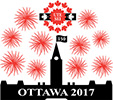The Convention
This Union is democratically organized and a feature of democratic institutions is that they do not run themselves. They require periodic review, renovation and restructuring. The Convention is the medium which enables members to examine the organization thoroughly. It is the time to seek an accounting from the elected officers and to establish guidelines and policies that will apply between conventions. It is a time to scrutinize, discuss, debate and decide. It is a time for seriousness and hard work.
Unions are created by people who recognize that their ideals and aspirations can only be achieved through organization. Such an organization, to achieve its designated objectives, must remain accountable and responsive to its members. Obviously, provision must be made for day-to-day operations to proceed uninterrupted and this is done at convention. It is the regularly-scheduled convention that provides the forum for the representatives (delegates) of the union members to determine policies and procedures and establish budgetary controls. A convention is democracy at work.
Our Union By-Laws provide for a convention every three years and that the convention shall be the supreme governing body of the Union, and that the Executive Council shall be vested with the authority to deal with all matters affecting the business of the Union between conventions.
Conventions are conducted in a parliamentary-like manner, with business being dealt with in the sequence outlined in the convention agenda.
The convention agenda not only sets the hours of sittings, but also specifies when certain matters must be attended to, i.e., the election of officers or submission of specific committee reports. A convention day usually consists of two sessions, one in the morning and one in the afternoon. Evening sessions may be added to the agenda, depending on the rapidity with which the convention dispatches the business placed before it.
Prior to the commencement of each session, the Credentials Committee reports on the number of registered delegates, observers and guests in attendance.
It is possible that there may be guest speakers interspersed throughout the general sessions; if so, the agenda will so state.
Once the gavel descends and convention Call-to-Order is announced, the first order of business consists of the report of the Credentials Committee and, after its adoption, the Rules of Order are placed before the convention for consideration and adoption. This is followed by the address of the National President who, incidentally, is also the convention Chairperson.
This address is usually in the nature of a report on the stewardship of his/her office and the governing body (the Executive Council) between conventions. Once this has been completed, the convention settles down to the task of considering all the resolutions and other matters submitted to it.
